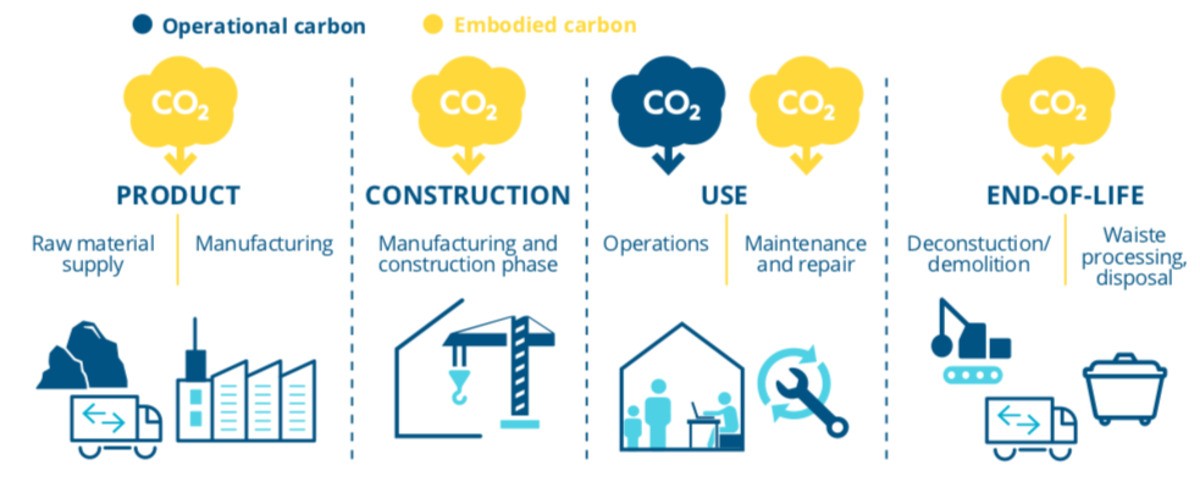Carbon performance a necessary complement to energy performance: EU buildings’ policy should address the carbon footprint of construction, says BPIE
Maria Stambler

BRUSSELS, 17 May 2021 – The EU’s forthcoming revision of legislation for buildings and construction is a critical opportunity to create policy and investment certainty on how energy performance requirements will be supported by carbon performance rules, says BPIE. New research from the think tank shows that while some EU Member States have introduced comprehensive policy action to reduce the carbon footprint of buildings and construction, this should now be coordinated and regulated at European level.
The European Union aims to be climate-neutral by 2050, requiring a fundamental transformation of the construction and building sectors. Direct building CO2 emissions need to more than halve by 2030 to get on track for a net-zero carbon building stock by 2050. In its Renovation Wave strategy which addresses decarbonisation of the building stock, the European Commission announced its intention to introduce a ‘2050 whole life-cycle performance roadmap’ to reduce carbon emissions from buildings’ by 2023.
“For new buildings built to the highest energy efficiency standards, the low operational energy demand means that embodied carbon becomes the most significant source of carbon emissions over the building’s lifetime,” says Oliver Rapf, Executive Director of BPIE.
Embodied carbon emissions are associated with energy consumption and chemical processes during raw material extraction, manufacture, transportation, assembly, replacement, construction, demolition and disposal of buildings, accounting for approximately 10-20% of EU buildings’ CO2 footprint. To address this ‘hidden’ carbon footprint, BPIE suggests a common European approach to whole-life carbon (WLC) emissions of the building stock, which should yield additional benefits in terms of greater transparency, comparability, and monitoring of progress across borders and industries.
Achieving a common EU approach requires intensified coordination across policy measures addressing and affecting the different stages of the construction value chain. However, BPIE finds that the introduction of a ‘2050 whole life-cycle performance roadmap’ scheduled for 2023 is out of sync with the current legislative review process. The ongoing review of the Energy Performance of Buildings Directive (EPBD) and the Energy Efficiency Directive (EED) provides a significant opportunity for the EU to begin consistently integrating WLC thinking and principles in the regulatory framework.
“Whole-life carbon in buildings and construction should be carefully considered now in 2021. Policy action taken by a number of Member States demonstrate that whole-life carbon policies are possible and desirable. The European Commission should reflect this in its forthcoming proposals to make sure that we don’t lose time in the fight against climate change.” Rapf concludes.
Read BPIE’s analysis:
BPIE whole-life carbon analysis and early responses from Member States
BPIE Policy briefing providing recommendations for EU action



